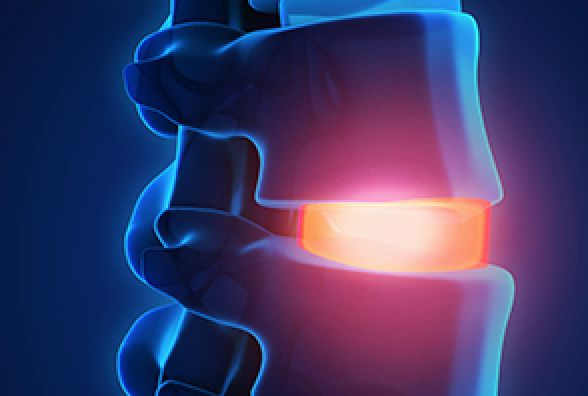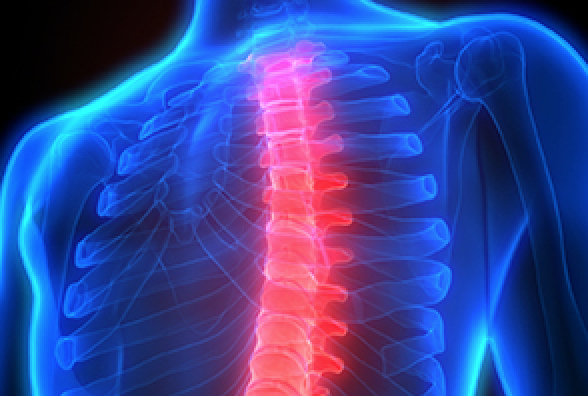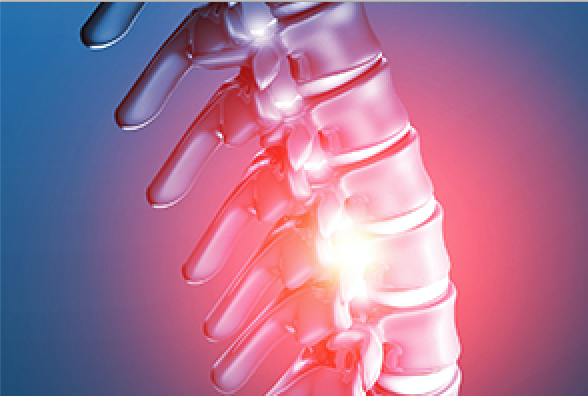What is Disc Osteophyte Complex
Disc osteophyte complex is the development of osteophytes (bone spurs) affecting more than one intervertebral disk or spinal vertebrae. Osteophytes or bone spurs develop in the musculoskeletal system due to normal wear and tear as you age.
Aging, degenerative disc diseases such as osteoarthritis, trauma or overuse injuries, and obesity can cause the spine to weaken. When this happens, the body produces extra bony nodules (an osteophyte or bone spur) to help reinforce the structural integrity of the spinal column or limit its ability to move.
It is possible to develop bone spurs and never feel any pain. However, when the bone spur interferes with neural activity, as it often happens with disc osteophyte complex, a plethora of uncomfortable and painful symptoms can occur.
Osteophytes and Neural Compression
The spinal cord is surrounded by a protective spinal column made up of vertebrae separated by spongy, cartilaginous discs. These intervertebral discs perform the following tasks:
- Protect the spinal column
- Shock absorption between vertebrae
- Flexion movement of the spine
- Ligamental, connective purposes
Disc osteophyte complex develops when a series of bone spurs develop on multiple vertebrae, compressing the intervertebral discs and exerting pressure on the nerve roots or even the spinal cord. As bone spurs grow around the foramen, they cause foraminal narrowing; a form of spinal stenosis.
Disc Osteophyte Complex Symptoms
Symptoms of disc osteophyte complex often do not happen initially. As the bone spurs grow and start rubbing on the vertebrae or impinge the nerve roots, you may begin to feel pain and decreased range of motion. This neural compression causes symptoms such as localized pain, pain radiating out to the extremities, numbness, tingling or pins-and-needles sensation. Although very rare, disc osteophyte complex has caused paralysis.
Disc osteophytes can cause different symptoms according to their location. For example, cervical osteophytes, meaning bone spurs in the neck area can cause:
- Headaches
- Dull neck pain
- Neck stiffness
- Radiating pain in arms and shoulders
- Numbness and tingling in one or both arms
- Arm weakness
Thoracic osteophytes or mid-back bone spurs might be rare, but they still occur. Thoracic bone spur symptoms might manifest in seemingly unrelated areas of the body, but most patients experience:
- Focal pain
- Radiculopathy
- Upper to mid-back pain
- Limited mobility of the thoracic spine
The lumbar spine can also be affected by osteophytes. In this case, radiating pain is often experienced in the legs and feet. Also, those who have bone spurs in the lumbar spine section also experience:
- Lack of movement in the back
- Back stiffness
- Pain that worsens with activity
- Radiating pain to the thighs and buttocks
- Tingling and weakness in the legs

CERVICAL OSTEOPHYTES
- Headaches
- Neck pain and stiffness
- Radiating pain in arms/shoulders
- Numbness or tingling in one or both arms
- Arm weakness

THORACIC OSTEOPHYTES
- Focal pain
- Radiculopathy
- Upper to mid-back pain
- Limited mobility of the thoracic spine
- Back stiffness

LUMBAR OSTEOPHYTES
- Lack of movement in the back
- Radiating pain to the thighs and buttocks
- Tingling and weakness in the legs
- Pain that worsens with activity
- Back stiffness
Diagnosis
To diagnose disc osteophyte complex, your doctor will ask you questions related to osteoarthritis and if your family has a history of that disease. After taking this detailed medical history, your doctor will examine your spine for any areas of swelling and tenderness can be detected by palpation.
If your doctor suspects disc osteophyte complex, radiological tests such as x-rays and an MRI scan will be ordered so that your doctor can see the internal structures and confirm the presence of bone spurs impinging the nerve roots.
Disc Osteophyte Complex Treatment
Once the diagnosis has been confirmed, your physician may recommend conservative, non-surgical disc osteophyte complex treatment. During this first course of treatment, your doctor might recommend a combination of treatments consisting of:
- Physical therapy
- NSAIDs (non-steroidal anti-inflammatory drugs)
- Corticosteroid injections
If your symptoms become chronic (they persist for three months or longer) your doctor may recommend surgery. Before The Bonati Spine Procedures, the only surgical option for osteophytes was open spine surgery which traditionally consisted of hospitalization and a long period of recovery.
The Bonati Spine Institute offer an array of surgical procedures to treat Disc Osteophyte Complex, which may include:
Alternative to Traditional Osteophyte Surgery
If you are interested in exploring a safe and effective alternative option to traditional osteophyte surgery with fast recovery, contact the Bonati Spine Institute today. The professionals at the Bonati Spine Institute can review your MRI scan and x-ray, and along with a complete examination, determine if you are a candidate for The Bonati Spine Procedures. Call (855) 267-0482 or fill out our online contact form.

